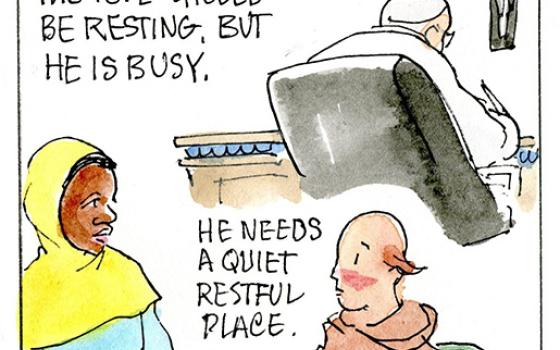When I visit websites of churches, I look for a clue about the theology being offered or promoted there.
For instance, on the site of a Southern Baptist Church in the Kansas City area, I found these words: “We believe the entire Bible, all 66 books of the combined Old and New Testaments, are verbally inspired by God and are inerrant in the original writings.”
I know immediately that these are Christians who might describe themselves as fundamentalists or who might say they take a literalistic view of scripture (in addition to being people who dismiss what we Protestants call the books of the Apocrypha). The key code word this Baptist church uses is “inerrant.” I would know that this congregation would not be a good fit for me, given that I believe you can take the Bible literally or you can take it seriously but you can’t do both.
When I became chairman of my congregation’s Faith Development (adult education) Committee this year I realized that although our church website has an engaging description of our congregation, we really didn’t have a guide to our theology. So we devised one and it’s now posted. It includes an introduction to some important theologians, along with the reminder that we’re all theologians.
It’s important for churches to be clear and forthright about who they are and what they teach. This helps newcomers have a clue about whether they’d feel at home there and it helps current church members by encouraging them to do a periodic re-examination of who they are and what they profess.
And yet I’m not suggesting that the goal is to have only theological birds of a feather flocking together. Indeed, I think we grow only when we’re challenged by people who are in different places theologically than we are. In my own congregation we have members who would self-identify as considerably to the left of center theologically and some who would say they are more to the right of center.
It’s sometimes not easy to hold together such diversity, but I think it makes us stronger and richer and, well, just more interesting. It also helps with our humility because sometimes you realize that those other goofballs are, um, right.
Some of us small “c” catholics might imagine that every Catholic parish in the U.S. would have pretty much the same “We believe …” statement posted on its website. They’re all Catholic, right? They all follow the Vatican, right? But, of course, it turns out that there’s a fairly wide variety of churches operating under the Catholic flag.
For instance, a great Catholic parish near me describes itself as “a community of communities … committed to a way of life based on Christ’s teaching and our Catholic tradition by being dedicated to life-long conversion in faith, healing sanctuary in our sacraments and relationships, an educational environment for our children which emphasizes Catholic values and is committed to excellence, awareness and responsiveness to the needs of our neighbors and our society.”
What it doesn’t tell you is exactly which Catholic “tradition” and “values” it’s talking about. I know this parish pretty well and admire it. It’s much less interested in staking out rigid positions on hot-button issues than it is in engaging in ministries of love and justice.
But you really can’t tell that from its statement called “Our Mission” on its website. You have to show up and discover whether this is a pre-Vatican II church or something more in tune with the new pope.
When new members join my church we tell them that our congregation now will be different because of them. But we also make it clear that if they want to turn us into either fundamentalists or believe-whatever-the-hell-you-like folks, they’ll have a tough time. I think our new “We believe …” website addition says that pretty directly, as it should.
[Bill Tammeus, a Presbyterian elder and former award-winning faith columnist for The Kansas City Star, writes the daily “Faith Matters” blog for The Star’s Web site and a monthly column for The Presbyterian Outlook. His latest book is Woodstock: A Story of Middle Americans. E-mail him at wtammeus@gmail.com.]




